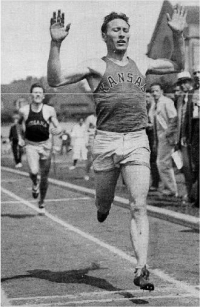 We’d like to introduce you to yet another member of our family of faithful kitchen appliances: our upright freezer! Take a bow, Freezer! Freezer? Ahem. Sorry, folks, but he prefers to be addressed as MISTER Freeze! Okay, that’s cool. Now say hello to our readers, Mr. Freeze.
We’d like to introduce you to yet another member of our family of faithful kitchen appliances: our upright freezer! Take a bow, Freezer! Freezer? Ahem. Sorry, folks, but he prefers to be addressed as MISTER Freeze! Okay, that’s cool. Now say hello to our readers, Mr. Freeze.
Mr. Freeze? Uh, he’s not talking today. Please forgive him. Like Mr. T, he has a bit of an attitude but, after all, it is his nature to be cold.
Mr. Freeze has been with us for quite a few years. He’s older than his cousin, Fridgey. In fact, he’s the eldest of his clan, and he’ll soon turn 25! — Mr. Freeze! Be nice. (He doesn’t like it when we discuss his age.) Anyway, because Mr. Freeze is an older — excuse us — a “classic” model, he has a habit of quickly accumulating a thick layer of ice on each of his shelves. But as we’ll soon explain, this characteristic has come in handy.
Mr. Freeze is a loner — mostly — so he resides in our garage. But he’s never totally alone; Mr. Freeze periodically hangs out with our blue SUV. That is, when Blue isn’t running the road. And at night, while we sleep, these two faithful servants share stories. Blue usually has the most exciting tales to relate, hair-raising adventures of the freeway and … well ….
Mr. Freeze has his own share of legends to relate, and one night he — What? Okay. Mr. Freeze wants to tell the story:
It was a dark and stormy night … and all through the house, not a creature was stirring — except this one goofy mouse.
That was way back in 1999, during the early morning hours of Christmas Eve. While my friends, Tom and Wilma, snoozed, a massive ice storm moved over the southeast and dropped several inches of freezing rain. (Grrr, what a show-off!)
My friends awoke to the sounds of tree branches breaking under the weight of a thick coating of ice. (The nerve! I make the ice around here!) Anyway, there were downed power lines everywhere, and Woodhaven didn’t have electricity for ten days. But did Tom and Wilma’s food go bad? Not while I’m on the job!
Sure, I didn’t have any power either, but I’m well insulated; and my layers of ice kept things good and cold — just like a big igloo cooler! So everything that needed refrigeration, I kept nice and fresh! Hey, Fridgey, did ya hear that?
Um, we all heard it, Mr. Freeze. But yes, it’s true, you saved the day! You’re a hero, a true legend in the annals of kitchen history. And because you’re an elder appliance, you deserve our respect and admiration.
By the way, some people are just like Mr. Freeze: they come across as cold (and distant). When we get around these people, they tend to give us a frosty reception (they’re grumpy). But like Mr. Freeze, they’ve endured many storms in life. Their outlook and emotions have been chilled by hurts and disappointments; and they’ve built up protective layers to insulate themselves from the world. Many of them have become as cold and hardened as pack ice.
Jesus warns us, “Because lawlessness will multiple, the love of many will grow cold.” (Matthew 24:12 Holman Christian Standard) In other words, the chill of our hurts and disappointments can cause pain, resentment, distrust, unforgiveness, and even a general feeling of bitterness to accumulate like layers of ice around our hearts. We can eventually become much like the shelves within Mr. freeze: bound by “ice” and frozen in life.
It’s easy to turn and walk away from people who are hurting and “iced up.” Because as Joyce Meyers often states, “Hurting people hurt people.” But the mister and missus freezes of this world nevertheless need our help, as well as the thawing influence of genuine love. King Solomon wrote, “Love is as strong as death…. [It] flashes like fire…. Many waters cannot quench love….” (Song of Solomon 8:6-7 NLT)
Love is the most powerful force in the universe; and God’s love is life’s universal antifreeze. 1 Corinthians 13 describes its “composition.” When we apply it, God’s supernatural Agape Love allows us to endure a little frostbite and eventually break through the ice that insulates people. God’s Love allows us to look beyond bad attitudes and nasty dispositions. It enables our Lord to use us to melt the coldest heart.
So drop the ice pick and put down the tongs, because “Love never fails.” (1 Corinthians 13:8 ISV)

 warm by the time the other students arrived. It was a simple chore, but one that required the boys to arise early and make great haste along chilly, dimly-lit streets.
warm by the time the other students arrived. It was a simple chore, but one that required the boys to arise early and make great haste along chilly, dimly-lit streets. Two years after the accident, Glenn took his first painful steps. That was in 1919. By 1929 he was training for the 1932 Olympic Games. As he dashed through vacant lots and empty fields, the citizens of Elkhart would remark, “See how he runs?” With intense pride, Glenn’s neighbors named him the “Elkhart Express”! But in the 1932 Games, where he took fourth place in the 1500-meter run, he was known as the “Kansas Flyer.”
Two years after the accident, Glenn took his first painful steps. That was in 1919. By 1929 he was training for the 1932 Olympic Games. As he dashed through vacant lots and empty fields, the citizens of Elkhart would remark, “See how he runs?” With intense pride, Glenn’s neighbors named him the “Elkhart Express”! But in the 1932 Games, where he took fourth place in the 1500-meter run, he was known as the “Kansas Flyer.” ! You see, the accident that nearly claimed his legs had also severely scorched his lungs; but by tilting back his head, Glenn was better able to breathe!
! You see, the accident that nearly claimed his legs had also severely scorched his lungs; but by tilting back his head, Glenn was better able to breathe!